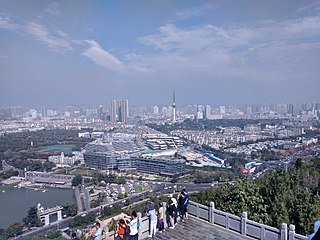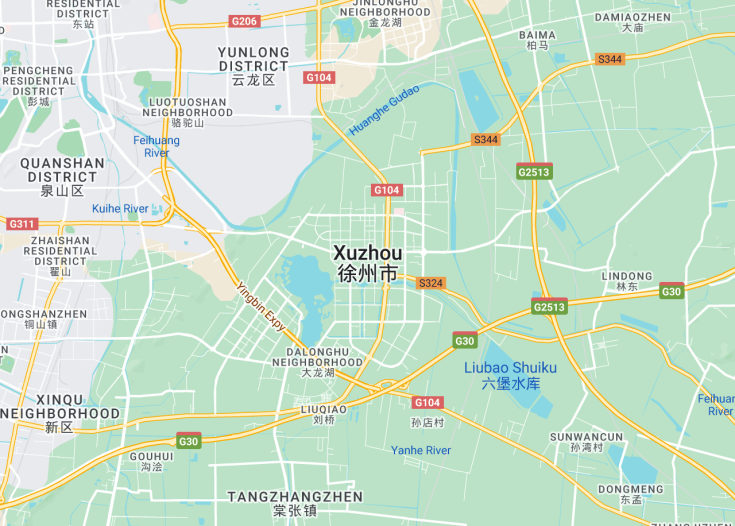Xuzhou, often referred to as the “City of Emperor Xuan”, is a remarkable blend of ancient history and modernity nestled in Jiangsu Province, China. It is renowned for its significant role in Chinese history, being a strategic battleground in various dynastic eras. The city’s landscape is adorned with historical relics, beautiful lakes, and exquisite gardens that echo tales of its imperial past. Xuzhou’s cultural heritage is highlighted through its museums and ancient sites, including the Terracotta Warriors of the Han Dynasty, making it a profound educational journey for any visitor.
When visiting Xuzhou, consider exploring in autumn when the weather is mild and the city’s picturesque landscapes are beautifully enhanced by the vibrant fall colors.
To fully embrace the historical essence of Xuzhou, plan a visit to the Xuzhou Museum, where you can witness an impressive collection of artifacts from its extensive past.
Top things to do & see in Xuzhou
Select the following sights and activities to discover best tickets and tours available in Xuzhou.
Xuzhou: A Gateway to China’s Glorious Past and Vibrant Future
| Country | China |
| Time in Xuzhou | GMT+8 |
| Language spoken | Mandarin |
| Population | 8.58 million (source: 2022 Statistical Yearbook) |
| Currency | Chinese Yuan (CNY ¥) |
| Airports |
|
Xuzhou, located in Jiangsu Province of China, is a city of immense historical significance and rapidly growing modern infrastructures. Known as one of the oldest cities with over 2,600 years of history, Xuzhou was the ancient battlefield of the Han Dynasty and holds a pivotal role in Chinese historical narrative. Today, it bridges the past and the future with its dynamic economic growth and cultural heritage preservation.
Xuzhou’s unique cultural landscape is marked by numerous historical sites and natural beauties, from museums preserving ancient artifacts to beautiful parks and lakes. The city is also a major educational hub, hosting several universities that attract thousands of students annually, contributing to its vibrant and youthful atmosphere.
Economically, Xuzhou is an important center for machinery production and has recently seen significant investments in high-tech industries and renewable energy projects. This economic diversity complements its rich cultural scene, making it a comprehensive example of a city that harmonizes tradition with innovation.
For tourists and residents alike, Xuzhou offers an array of activities from exploring ancient mausoleums and tombs to enjoying modern shopping malls and entertainment facilities. It’s a city where history is palpable in its temples and opera houses and where you can also experience the pulse of modernity through its thriving city life.
Xuzhou’s geographical significance cannot be overstated. Located at the junction of two essential Chinese rivers and serving as a gateway between the north and south, it features prominently in both economic strategies and historical events. The city’s transport infrastructure is well-developed, including highways, railways, and the Xuzhou Guanyin Airport, enhancing its accessibility and importance as a logistics hub.
Where is Xuzhou?
Xuzhou is located in the eastern part of China’s Jiangsu Province, strategically positioned between Shanghai and Zhengzhou.
Distances:
| Route | Distance by car | Time by car |
|---|---|---|
| Shanghai to Xuzhou | 400 miles (644 km) | Approximately 6 hours |
| Nanjing to Xuzhou | 200 miles (322 km) | Approximately 3 hours |
| Beijing to Xuzhou | 434 miles (698 km) | Approximately 7 hours |
What is Xuzhou famous for?
Xuzhou is renowned for its rich cultural heritage including the terracotta warriors of the Han Dynasty, its beautiful Yunlong Lake, and as a pivotal historical city in Chinese history.
History
Prehistoric Period – Ancient Times
Xuzhou, known as one of China’s most ancient cities, has a history that stretches back over 5,000 years. The region was initially inhabited by Neolithic cultures, notable for their contributions to the development of Chinese civilization. Archaeological findings, including pottery and tools, suggest a thriving community long before written records. Xuzhou’s strategic location at the intersection of key cultural and trading routes contributed to its early significance.
221 BC – 589 AD: Imperial Stronghold
With the unification of China under the Qin Dynasty, Xuzhou became an important military and administrative center. Throughout the Han Dynasty, it was a crucial battleground due to its strategic location. The city saw significant development during these periods, including the construction of imperial palaces and the promotion of Confucian doctrines. Several Han Dynasty tombs have been discovered in Xuzhou, containing exquisite relics such as jade suits and ornate carvings, underscoring the city’s importance during this era.
589 AD – 1911: Dynastic Changes
Over the centuries, Xuzhou was influenced by the rise and fall of successive Chinese dynasties. It served as a cultural, economic, and military hub. During the Tang and Song dynasties, Xuzhou experienced cultural flourishing, with advancements in literature, arts, and sciences. The city’s strategic importance continued through the Ming and Qing dynasties, acting as a defensive front against northern invasions.
1912 – Present: Modern Developments
The 20th century brought significant changes to Xuzhou. It was a major site during the War of Resistance against Japan and the Chinese Civil War, influencing its modern political and social landscape. In recent decades, Xuzhou has transformed into a booming industrial and technological hub, leveraging its rich history and strategic position to foster growth in modern industries such as machinery, energy, and materials. Today, it is celebrated not only for its deep historical roots but also for its role in modern Chinese development and innovation.
Visit Xuzhou
What to see and do in Xuzhou, China
Xuzhou offers a rich tapestry of historical and cultural attractions. Visitors can explore the Terracotta Warriors and Horses of the Han Dynasty, a less-crowded alternative to Xi’an’s famous warriors, providing insight into imperial army formations. The Xuzhou Museum, housed in a traditional architectural complex, displays a remarkable collection of artifacts that narrate the city’s history. The stunning Yunlong Mountain adds a natural escape, ideal for hiking and enjoying panoramic views of the city. For a taste of local life, stroll through the bustling markets or relax in one of the traditional tea houses.
Festivals and Events
Xuzhou’s cultural calendar is dotted with vibrant festivals and events, notably the Spring Festival with its lively dragon dances and fireworks. The September harvest brings the Pei County Grape Festival, celebrating local agriculture with grape picking, wine tasting, and cultural performances.
Best time to visit Xuzhou
The ideal time to visit Xuzhou is during spring (April to June) and autumn (September to November). These seasons offer mild weather, conducive to exploring the outdoor historical sites and engaging in cultural festivals without the harsh heat of summer or the biting cold of winter.
is Xuzhou worth visiting?
Xuzhou, with its profound historical layers and cultural richness, offers a unique slice of China untouched by mass tourism. The intricate mix of ancient relics, lush landscapes, and lively cultural scenes make it a compelling destination. However, visitors might find the industrial aspects less appealing, and the language barrier could pose challenges. Nevertheless, for those intrigued by history and culture, Xuzhou promises a rewarding journey into the heart of traditional China.










